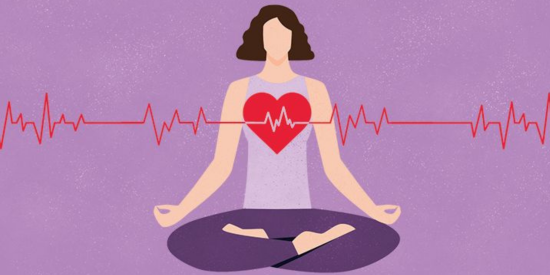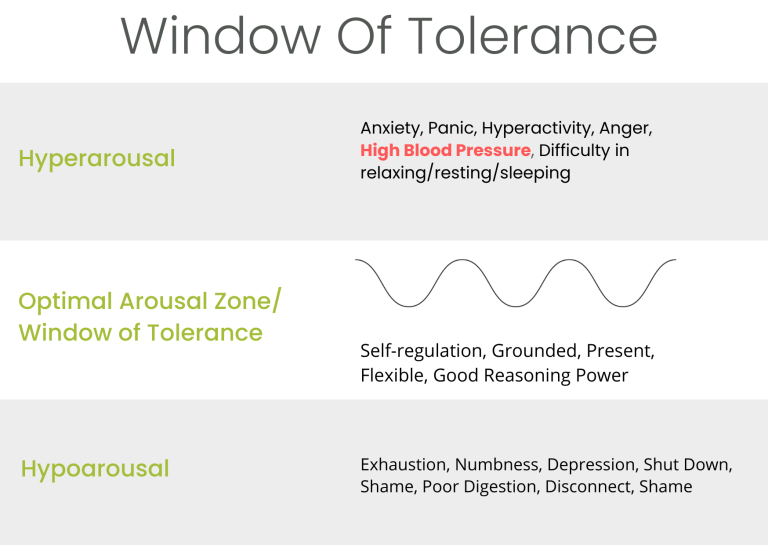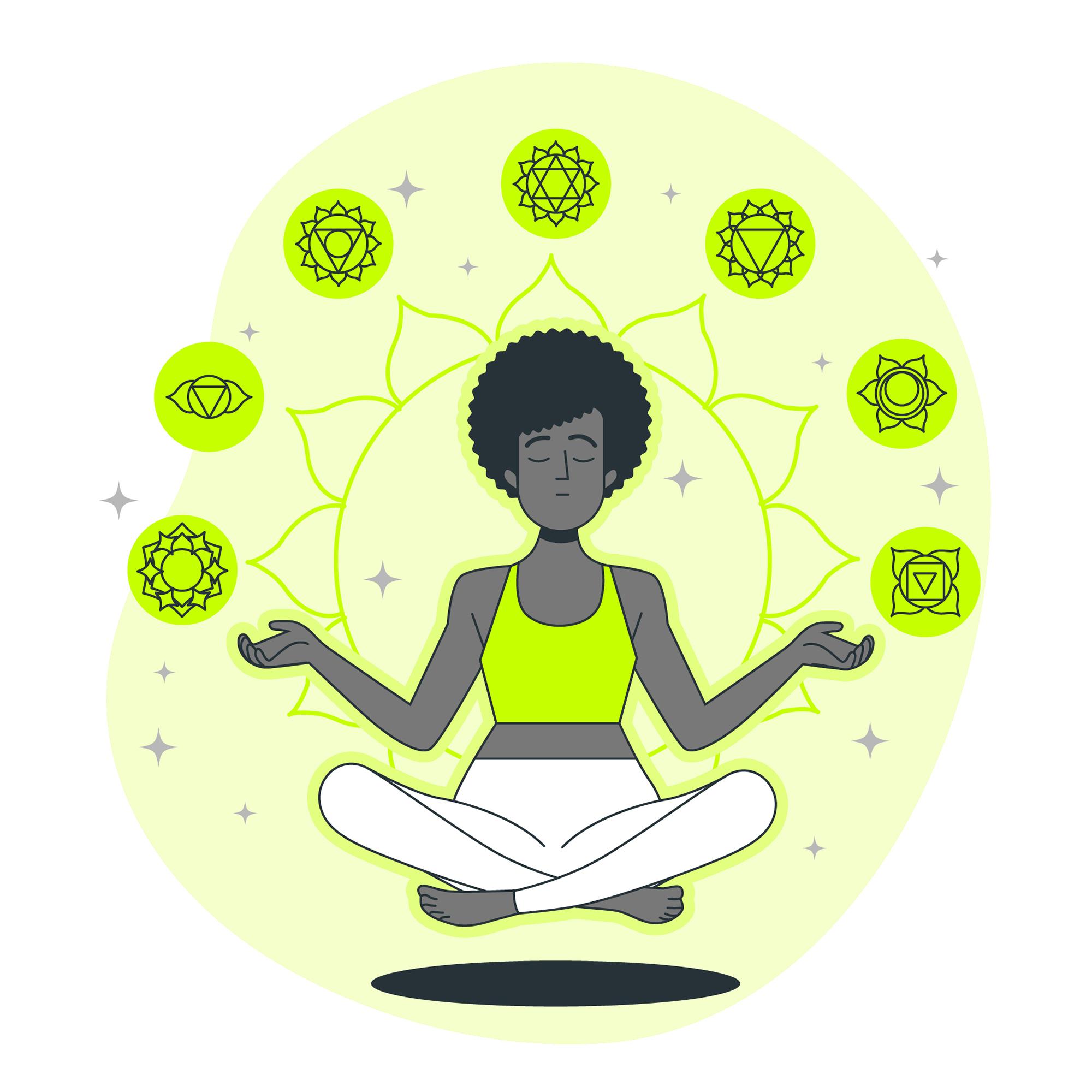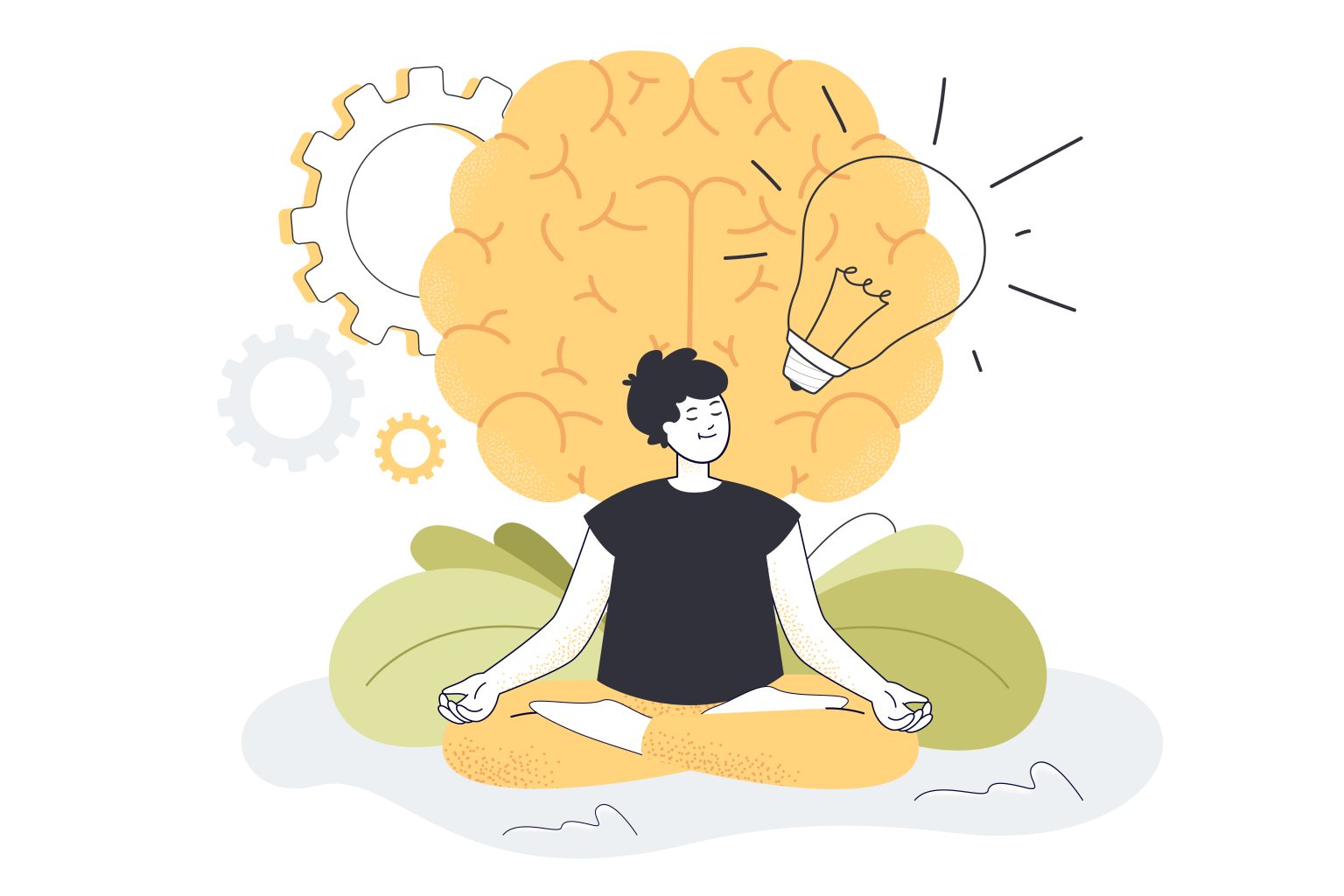
On World Hypertension day, here is our sharing on how stress leads to hypertension and what you can do on a daily basis to directly help the body become less stressed and manage hypertension with mindfulness.
We are no strangers to hearing of several young people going through heart ailments and heart attacks due to stress. One in five young adults in India has high blood pressure, according to research presented at the 70th Annual Conference of the Cardiological Society of India (CSI) in 2018.
We are often asked to ‘work on our stress’ in order to reduce or manage hypertension. Only, we are not sure how to do this and that is where this article can help.
Two things are needed in order to manage bodily stress successfully:
- An understanding of how exactly stress impacts our body
- Learning to help our body de-stress
Let’s look at both these points one by one.
Learning about the “Window of Tolerance” given by Dan Siegel will help us understand how prolonged stress causes and sustains hypertension.
Understanding The Impact Of Stress In The Body

The Optimal Arousal Zone

This is how the body is, in a state of ‘rest and digest’, or, when it is not in a stressed state.
When we are in the Optimal Arousal Zone
- We are able to carry out day to day functioning without feeling extreme stress of any kind.
- Changes in the mood and emotions feel normal.
- Challenges feel manageable.
- Relaxing from time to time feels easy and natural.
- We are able to focus and be grounded.
- We are able to make decisions with proper reasoning.

Practice Mindfulness Through Our Free Mindfulness Videos
The Hyperarousal Zone: Leading To Hypertension

Our busy lifestyle and the increase in everyday stress easily pushes us from the Optimal Arousal Zone to the Hyperarousal Zone. The hyperarousal zone involves increased alertness, a sense of urgency, reduced blood flow to the internal organs (like the digestive and reproductive systems) and more blood flow to the limbs. Basically, this is the body preparing to deal with the immediate stress by fighting it or escaping it.
The hyperarousal state is actually designed for us and is healthy if after a short while we return to the optimal zone. However, very often, many of us remain stuck in the hyperarousal zone for long periods of time. As a result, our body gets the message that functioning in the hyperarousal zone is a normal way to be. In our daily life, this can manifest as-
- Feeling alert and on guard
- Increase in palpitations and hyperactivity
- High blood pressure
- Low tolerance for changes
- Increase in aggression and reactivity
- Hypertension even for small triggers
- Racing thoughts
- Digestive difficulties
- An inability to rest and relax even when there is no immediate stressor.
The Hypoarousal Zone

Sometimes, persistent stress can send the physiology into a state that’s the polar opposite of what we saw above. Contrary to the hyperarousal state, the hypoarousal state is a state of shut down and numbness. Functioning in hypoarousal zone can look like-
- Lack of energy
- Feeling of constant exhaustion
- Numbness
- Feeling depressed
- Low motivation
- Feeling frozen, dull or leaden
Manage Hypertension With Mindfulness: Learning To Return To The Optimal Arousal Zone

Mindfulness and grounding practices can greatly help in managing symptoms of stress.
While it’s easy for the mind and body to slip into stress mode, you can intervene by recognizing that the body has now become stressed and helping it return to baseline.
Here is a starting point to return to baseline when your mind and body are worked up, or, in the hyperarousal zone.
Learn More: Online Meditation Course: 8 Weeks Mindfulness Meditation
Recognize
Consciously recognize when you are functioning in the hyperarousal zone. When you catch the body in the moment, you have the opportunity to intervene and change this cycle. Otherwise, it is simply continuing on autopilot, going on and on. Common cues of the hyperarousal state are –
- Stiffness in the head/neck
- Jaws are clenched
- Breath is shallow/constricted. Taking a deep breath feels like you’re having to push the air in.
- Stomach is sucked in and tight.
- Body feels uptight rather than relaxed
- Mind is racing
- Body and mind feel restless.
Pause
Take a pause for a few minutes when you recognize this. Pause whatever you are doing so that you can pay attention to yourself, for a bit.
Regulate
There are several ways to regulate the body and come back to a state of rest.
- Conscious Relaxation – check in with the body. Just hang in with the body, noticing it, for a few moments. You will recognize what areas are holding tension. As you breathe out, let any tense muscles relax. The same areas described under “a. Recognize” are the parts you might want to open up and relax.
- Grounding – Grounding is a practice that helps us feel centered and calm. Once you’ve checked in with the body and let it relax, spend some time noticing the connection between the seat of the body and the chair or ground. Notice the touch of the feet on the floor. Noticing this immediately grounds and settles the body. Don’t struggle hard to focus. Just notice whatever naturally comes into your awareness as you breathe. Here is a grounding practice guided by Sadia Saeed to help you calm down and feel more centered. (This video is from a series of videos to help with Trauma and Overwhelm. However, the grounding practice is just as helpful for all stressed states. Skip to 4.17 to go directly to the practice)- Grounding & Creating Support – Exercise 1/5 | Trauma & Emotional Overwhelm Series- By Sadia Saeed – YouTube
- Mindful breathing – Mindful breathing simply means breathing with awareness. Taking even a few breaths while being fully aware of the inhalations and exhalations can greatly help to calm the body. In addition, breathing into the diaphragm helps to open and destress the body further. Here is a link to the diaphragmatic breathing technique. Learn the Diaphragmatic Breathing Technique – YouTube
- Mindful movement – this is about consciously moving whatever body parts you intuitively feel like moving, to help the body come out of the stressed state. Only, see to it that you make these movements slowly and while being fully aware of it. This can look like stretching the back, moving the hips a little, moving the neck, opening up the jaws or stretching through the wrists and ankles. Just about any movement is okay as long as it is what feels good in your body in that moment.
In sum, any activity that helps you slow down, connect to the here and now and step out of the flowing thoughts will help.
We understand that you run busy. We don’t want you to worry about ‘resting’ as another thing to do! Any activity done with awareness can help. For example , drinking a cup of tea peacefully rather than while finishing some phone calls; checking in with yourself and seeing if you really want to scroll through that app or just want to keep the screen aside for a bit. By and by, you build a deeper connection with yourself and your need in the moment, and it definitely makes you more restful over time.
Consider Help – If there are any significant triggers bothering you, consider seeking help from a therapist to help you learn to manage your experiences better.
Hypertension can be managed. Do look after yourself and your first home – your body 😊
May you be well, may you be happy!
Additional Resources
Here are some additional resources to help you ground and relax:
Grounding through 3 Senses- Grounding Through 3 Senses – Exercise 2/5 | Trauma & Emotional Overwhelm Series- By Sadia Saeed – YouTube
Grounding through Self Touch- Self Touch – Exercise 3/5 | Trauma & Emotional Overwhelm Series- By Sadia Saeed – YouTube
Breathing to Destress- Using Breath to Reset The Vagal Tone – Exercise 4/5 | Trauma & Emotional Overwhelm Series- by Sadia – YouTube
Accessing A safe memory, if you are feeling overwhelmed- Access a Safe Memory – Exercise 5/5 | Trauma & Emotional Overwhelm Series- by Sadia Saeed – YouTube
Learn Breathing Meditation- https://innerspacetherapy.in/breathing-meditation/
About the Author
This article was written by Shubhra and Malini, Counselors and Mindfulness Practitioners at Inner Space. This post was consulted & approved by professional therapists practicing online therapy and counseling.
If your Hypertension still feels too intense to manage, talk to a professional





Excellent way explained